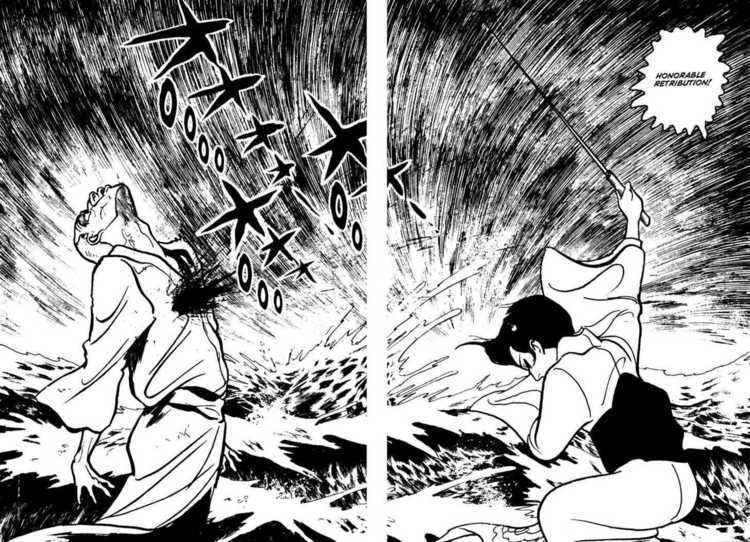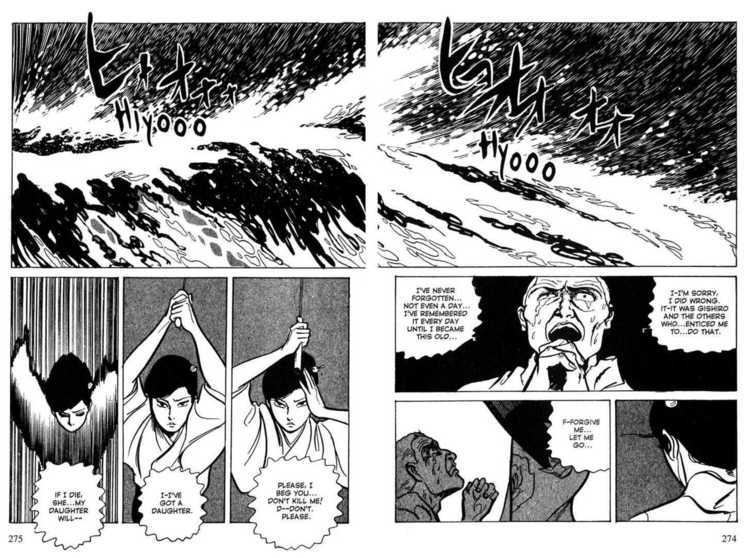Genre Chanbara Adaptations Lady Snowblood (1973) | ||
 | ||
Lady Snowblood (Japanese: 修羅雪姫, Hepburn: Shurayuki-hime) is a manga written by Kazuo Koike and illustrated by Kazuo Kamimura, and serialized in Shueisha's Weekly Playboy. It was translated into English and published in four volumes by Dark Horse Comics between 2005 and 2006.
Contents

Lady Snowblood centers around the title character, an assassin who seeks vengeance against the bandits who raped her mother and murdered her father, often using her sexual appeal as a weapon.

The manga was adapted into a live-action feature film of the same name starring Meiko Kaji in 1973. It was followed by Lady Snowblood 2: Love Song of Vengeance in 1974. In 2001, the manga was reimagined as the science fiction action film The Princess Blade, starring Yumiko Shaku and Hideaki Ito.

Title
The Japanese title Shurayuki-hime is a pun on Snow White's Japanese name (白雪姫, Shirayuki-hime, "Princess Snow-White"). The word Shura comes to mean Asura, semi-divine beings consumed in the act of violence and unresolvable conflict, and the allusion of those that live lives forever involving such a fate. The title was translated as Lady Snowblood because Asura is associated with the term shuraba "scene of a great battle" or "scene of carnage".
Plot
Oyuki - Lady Snowblood - is given a task of vengeance to kill those who murdered her family and raped her mother. Tokuichi Shoei was stabbed to death by Oyuki's mother. Oyuki's mother was sent to jail for that crime and had a daughter in prison to exact retribution of the other three perpetrators. Okono Kitahama was set up by Oyuki to lose all her assets and was framed as a murderer. Gishiro Tsukamoto discovered Oyuki's plan and used Miyanara as bait but was still killed by Oyuki. Hanzo Takemura begs her forgiveness, however is still assassinated by Oyuki for honourable retribution.
Characters
Production
Originally published in Shueisha's Weekly Playboy in the early 1970s. It was translated and published in English between 2005-2006 by Dark Horse Comics. Dark Horse Comics published the English version into 4 separate volumes. Within each volume there are separate episodes, although each episode is usually a self-contained arc, it is also a continuation of the larger story.
In other cultures
In 1973, the story was adapted into a feature film of the same name by director Toshiya Fujita, starring Meiko Kaji. The film was followed by Lady Snowblood: Love Song of Vengeance in 1974. A science fiction remake (The Princess Blade) starring Yumiko Shaku was released in 2001.
Lady Snowblood and its 1973 adaptation are credited as the inspiration behind Quentin Tarantino's Kill Bill.
Reception
Tom Rosin from Manga Life considered Lady Snowblood "another cold-blooded revenge drama from the author of Lone Wolf", and said he enjoyed the mix of Western modernization and Japanese traditionalism. W.E Wallo from blogcritics.org finds the English translation weak compared to translation of Lone Wolf and Cub, however he recommends it to any fans of the Lone Wolf series. Similarly to Tom Rosin, he praises the "East/West dichotomy" theme that is prevalent in the novels.
